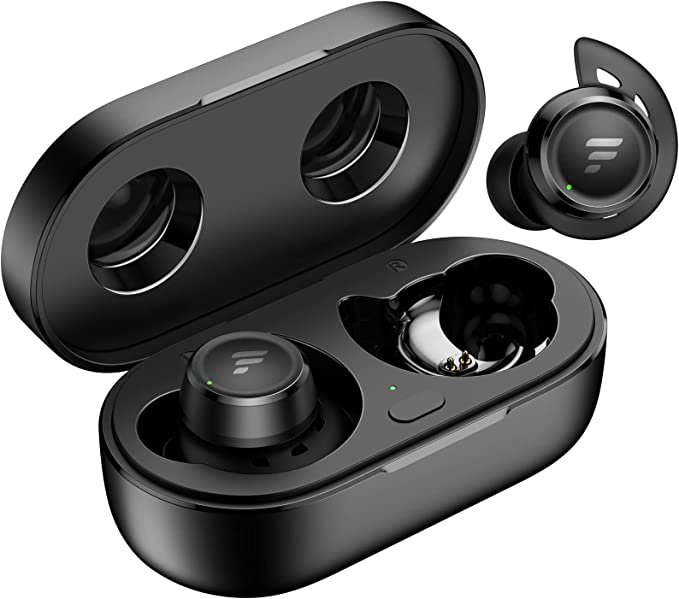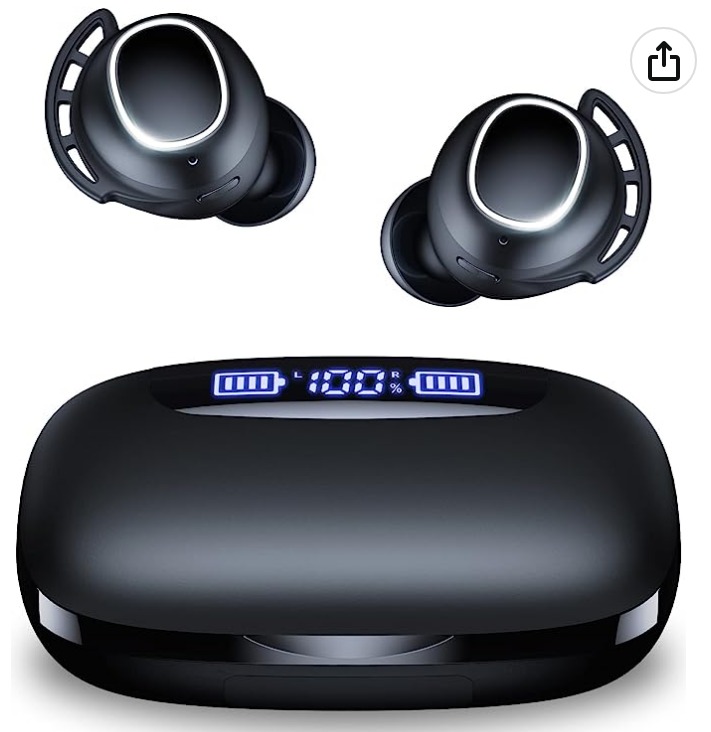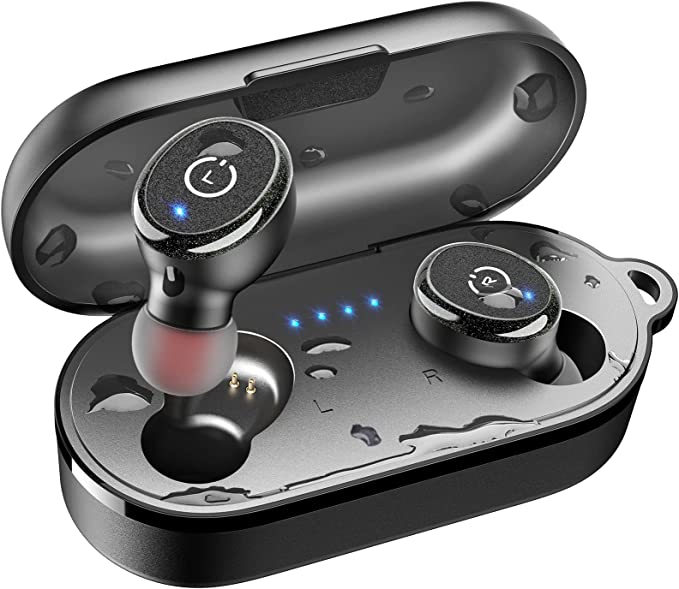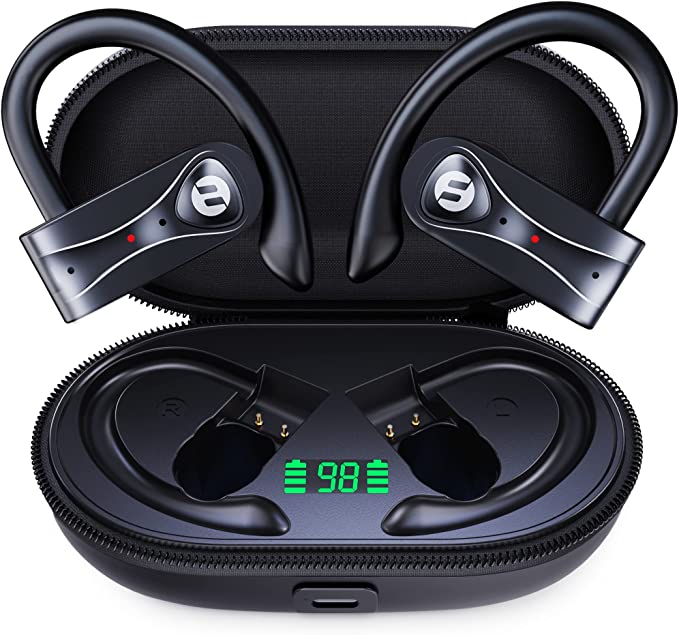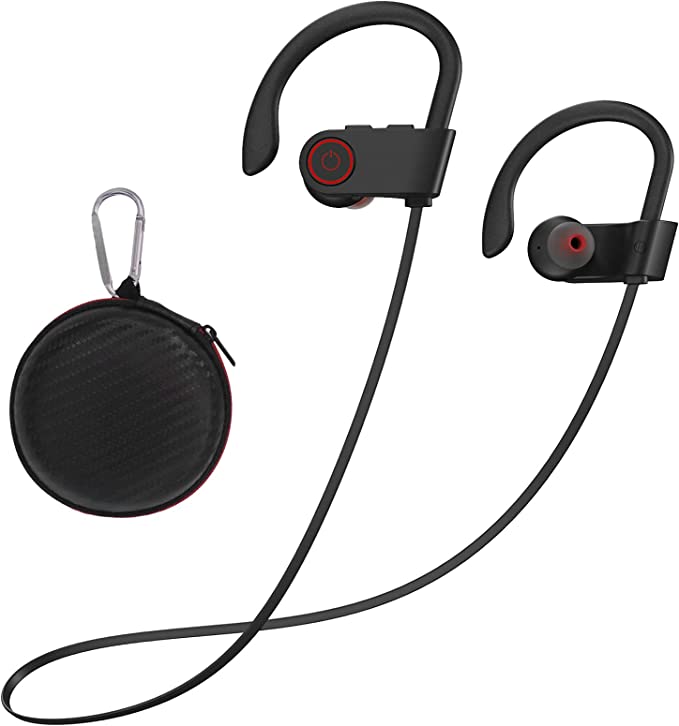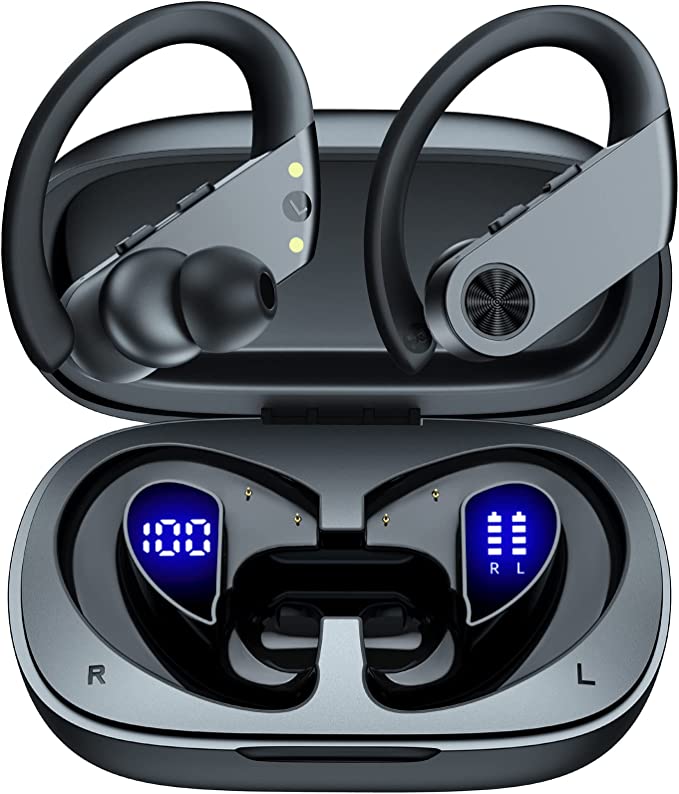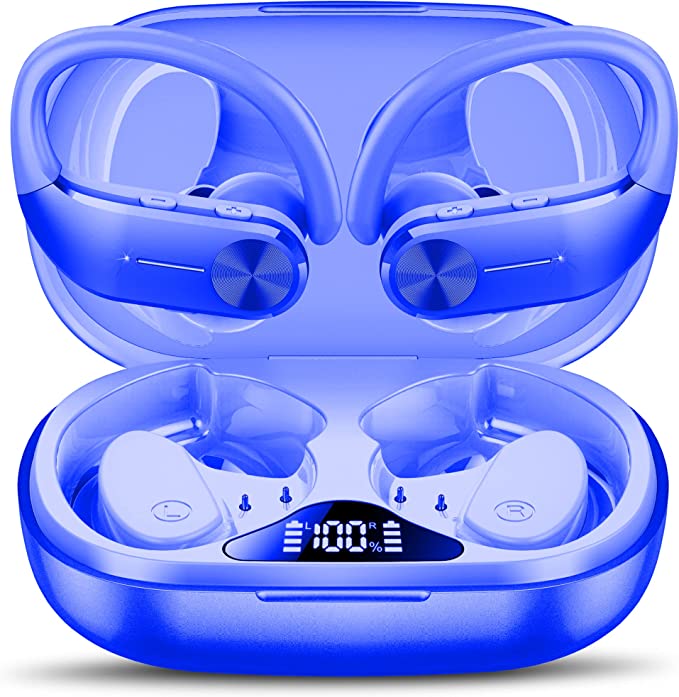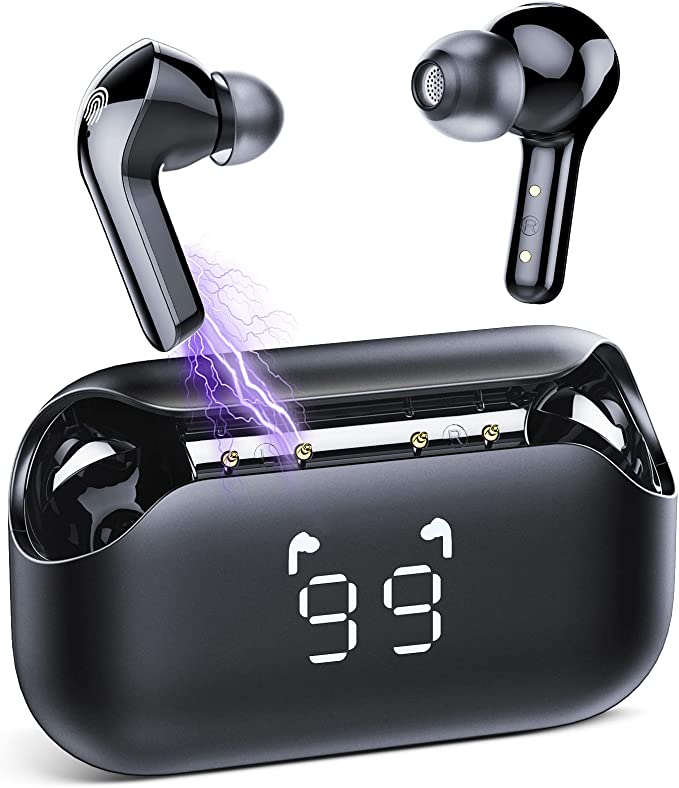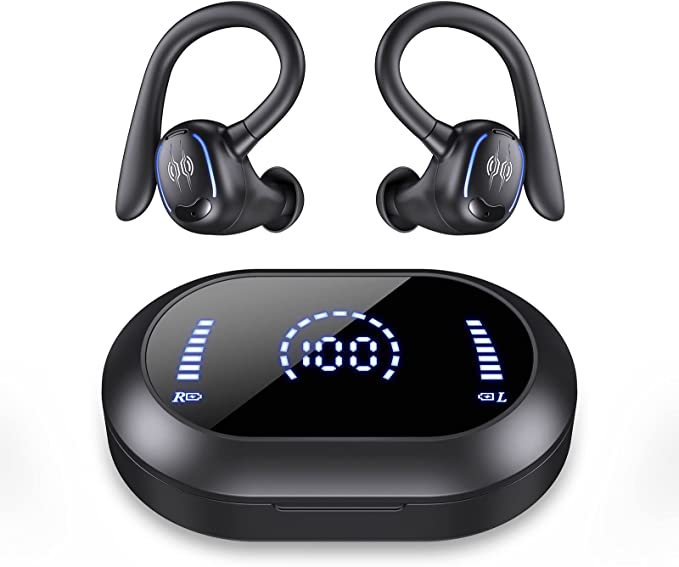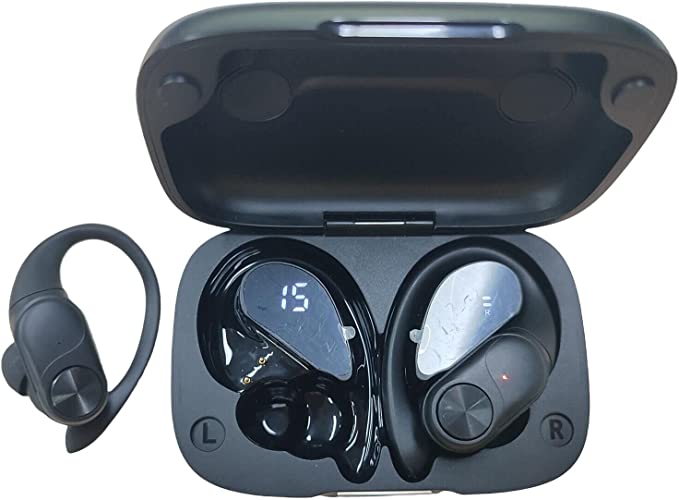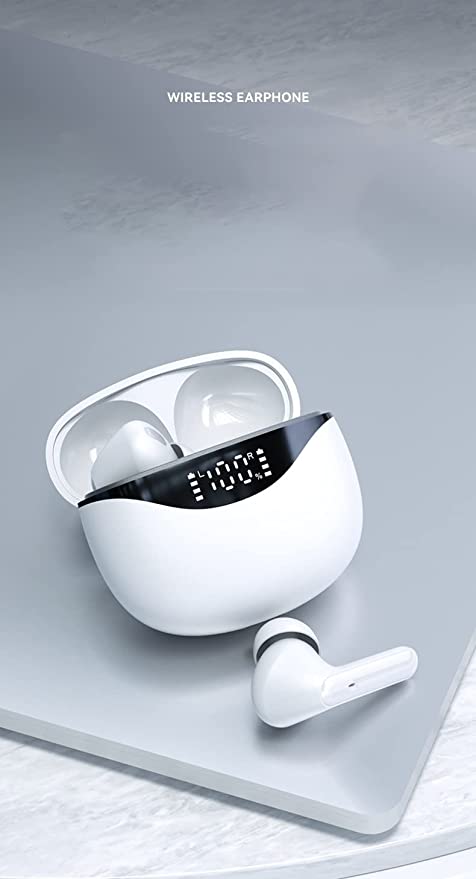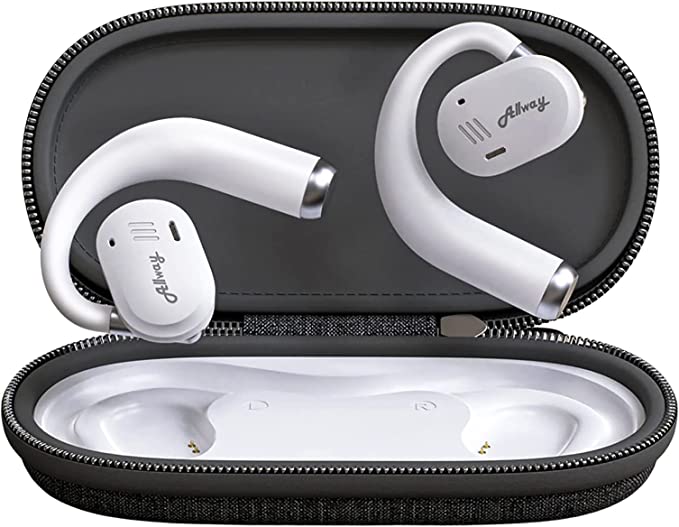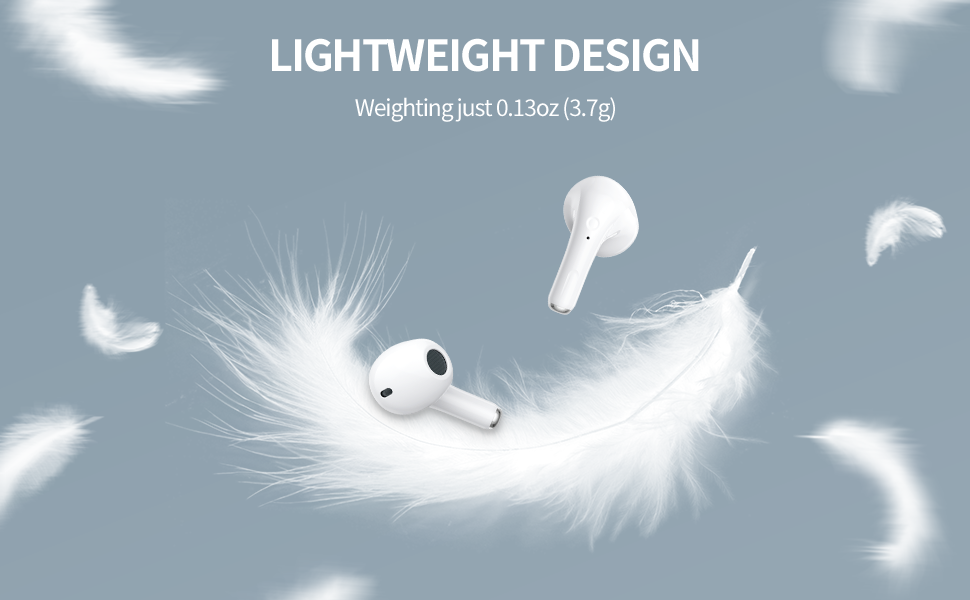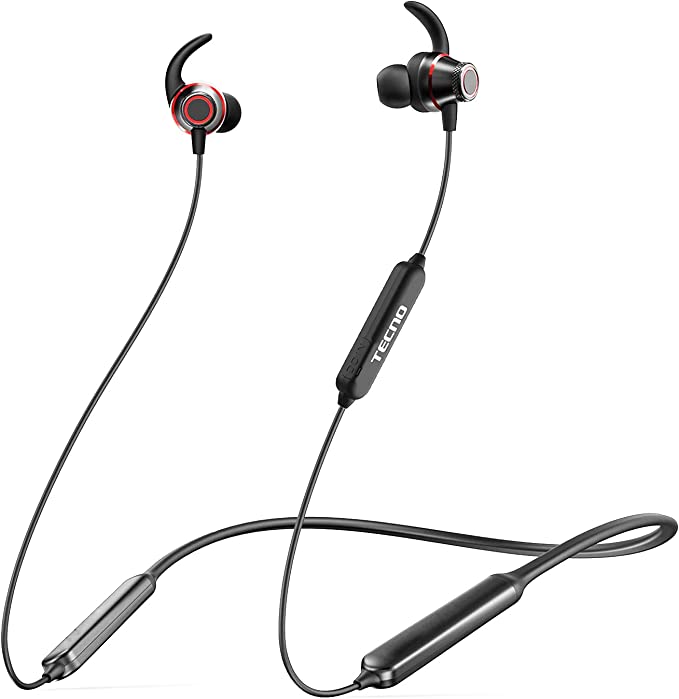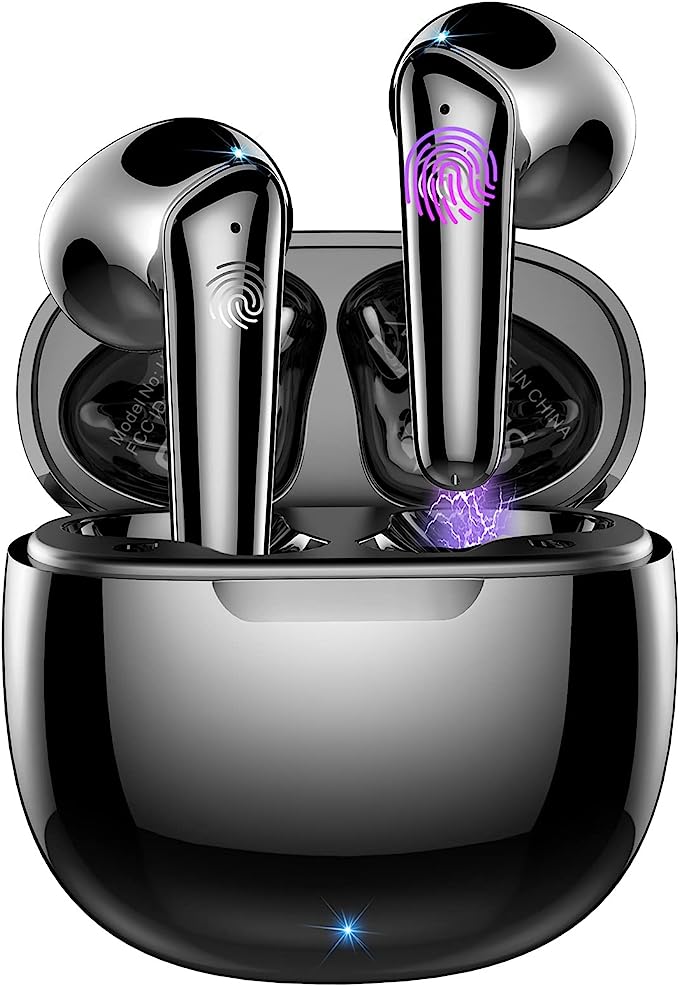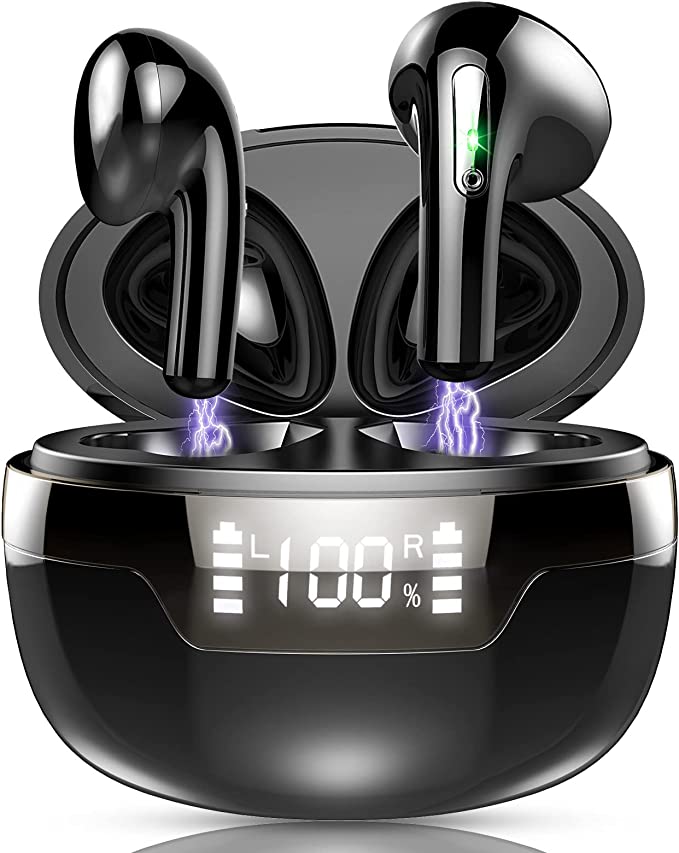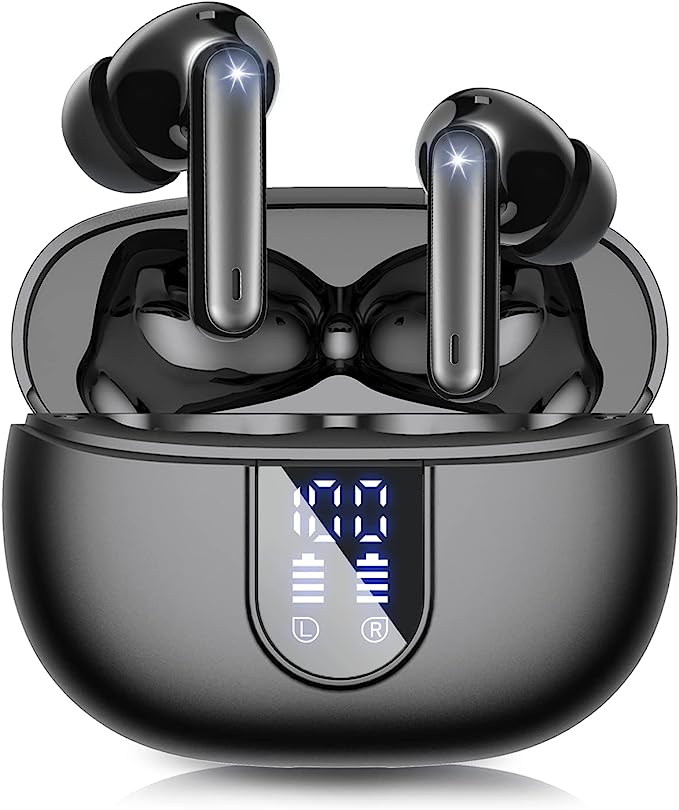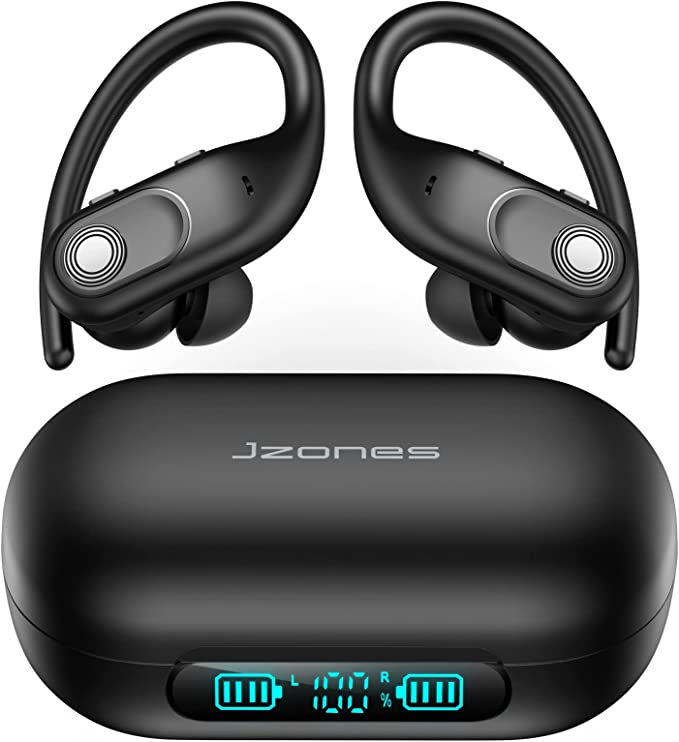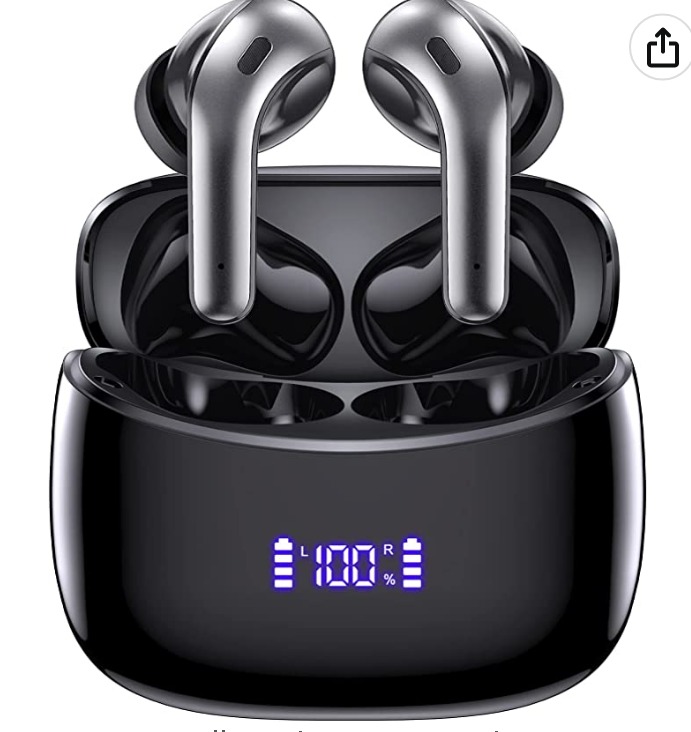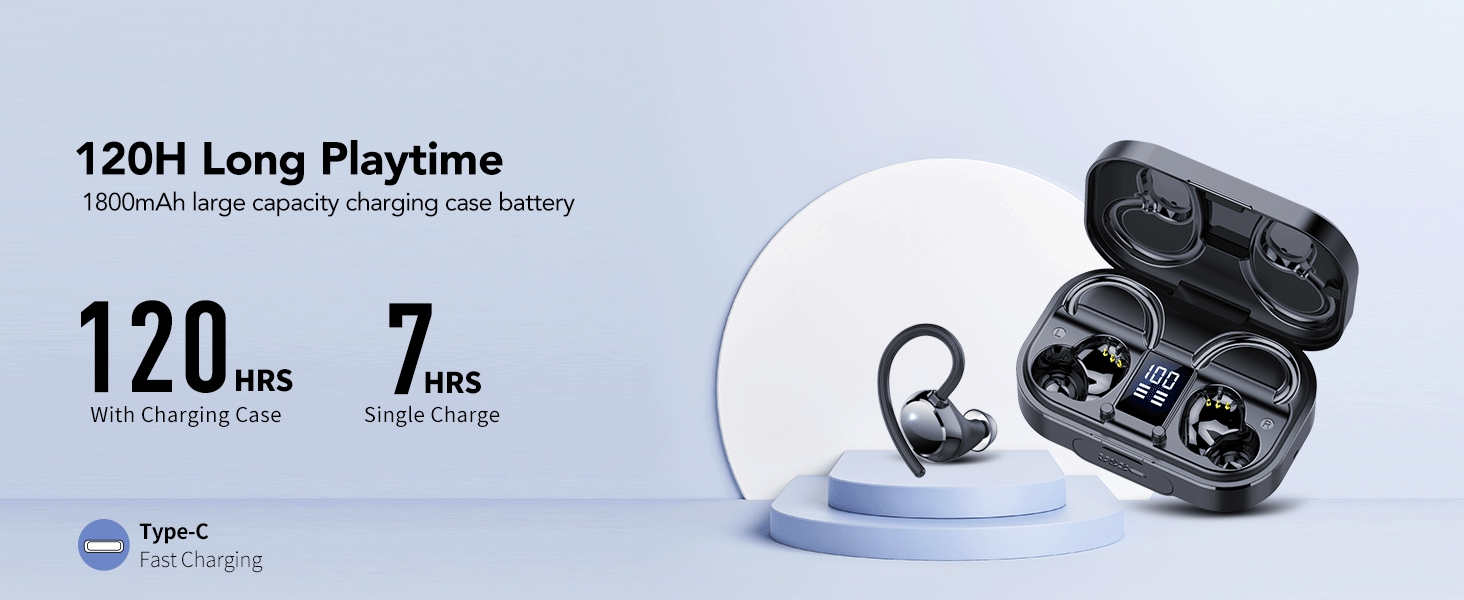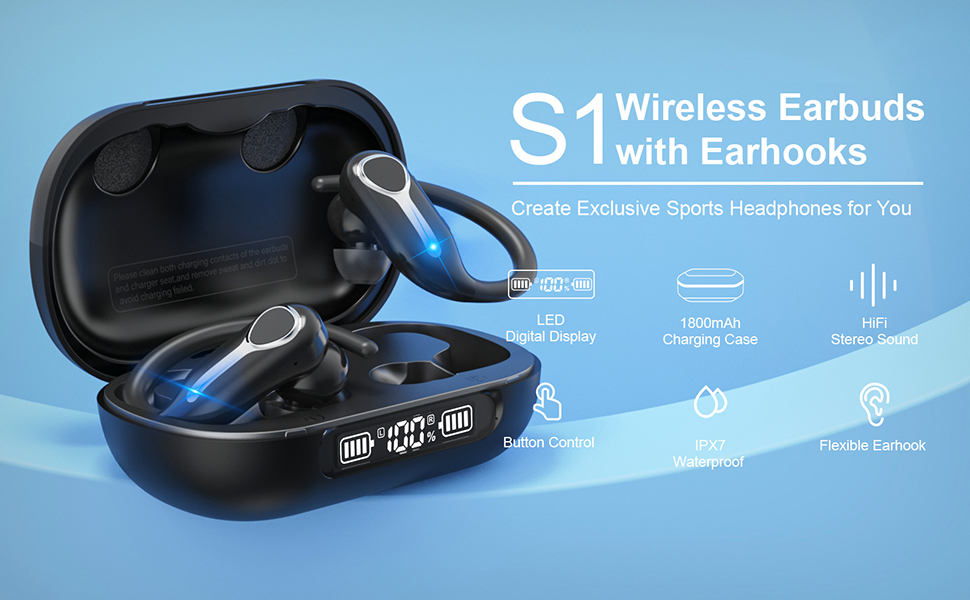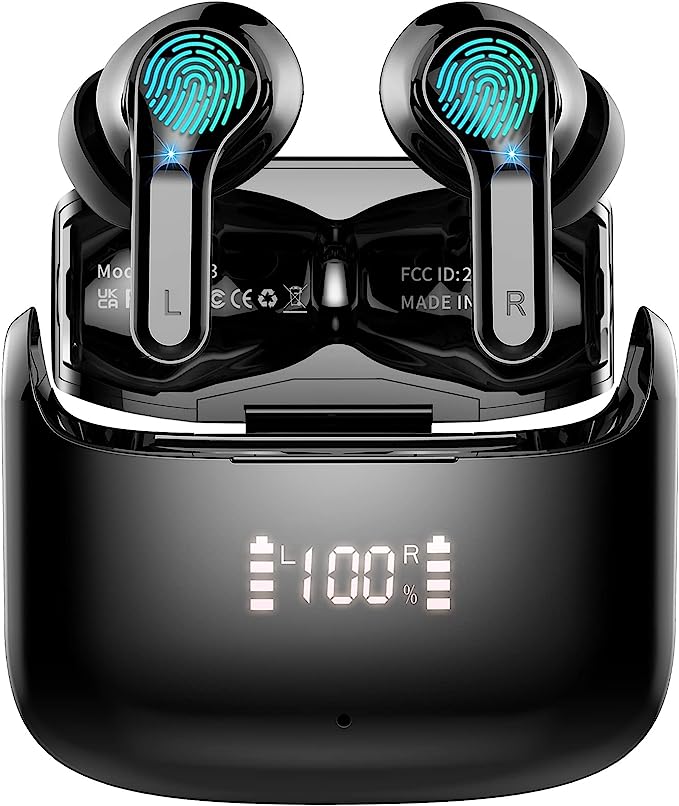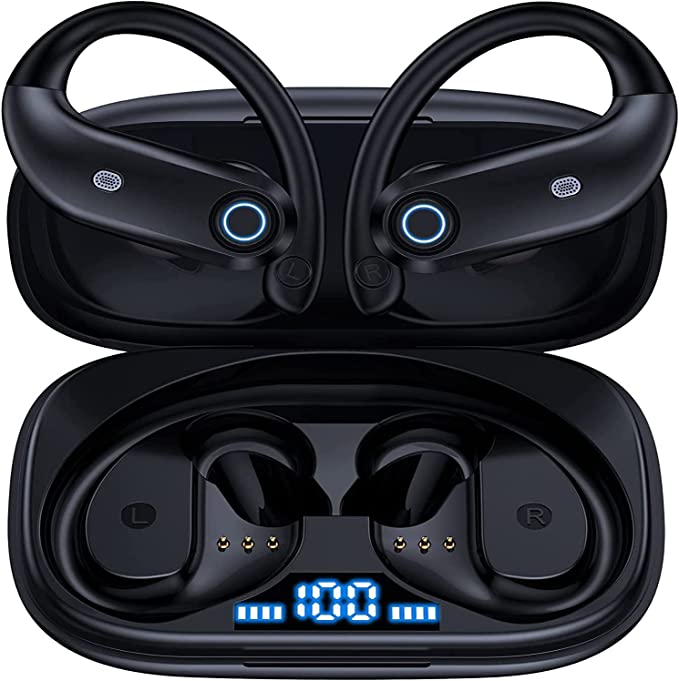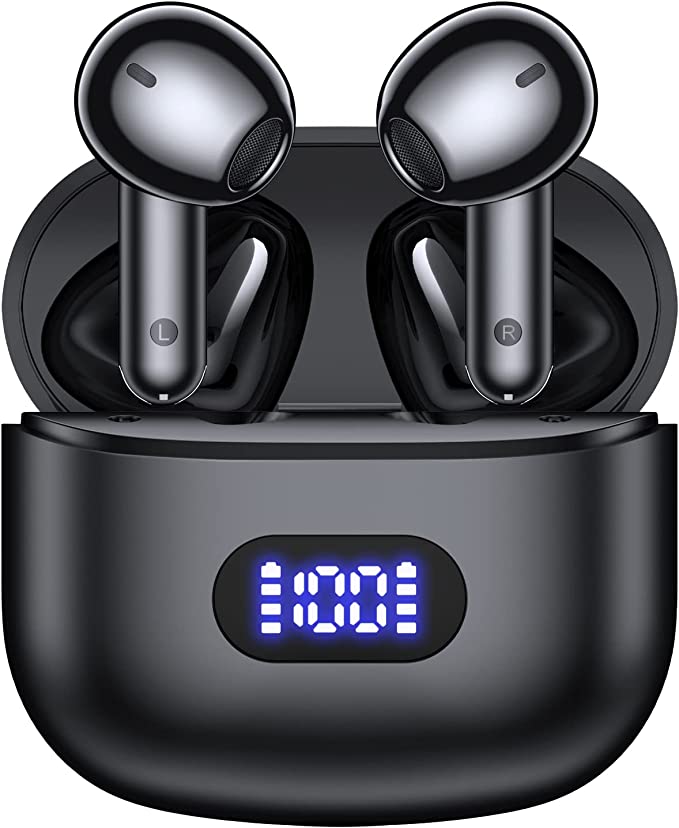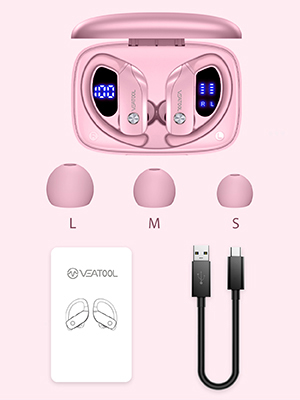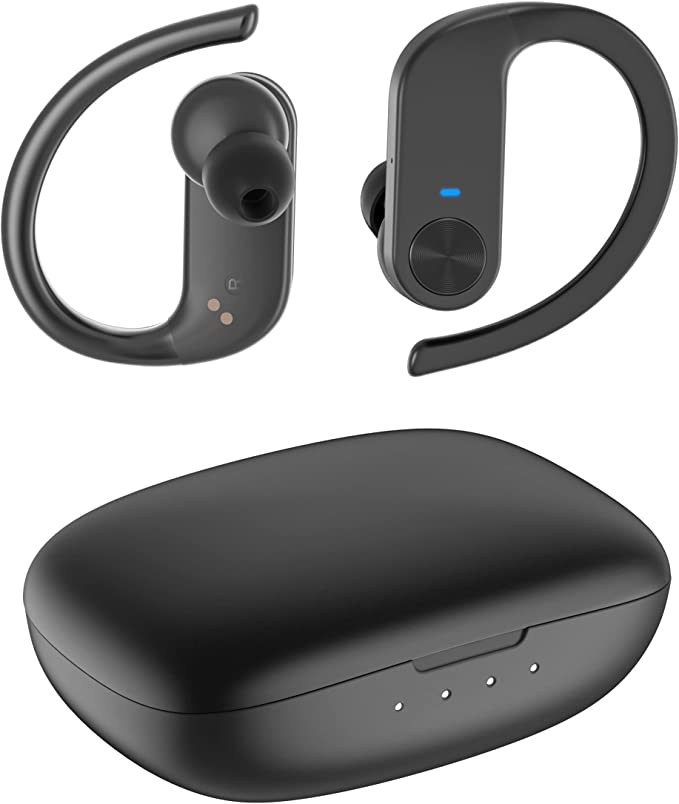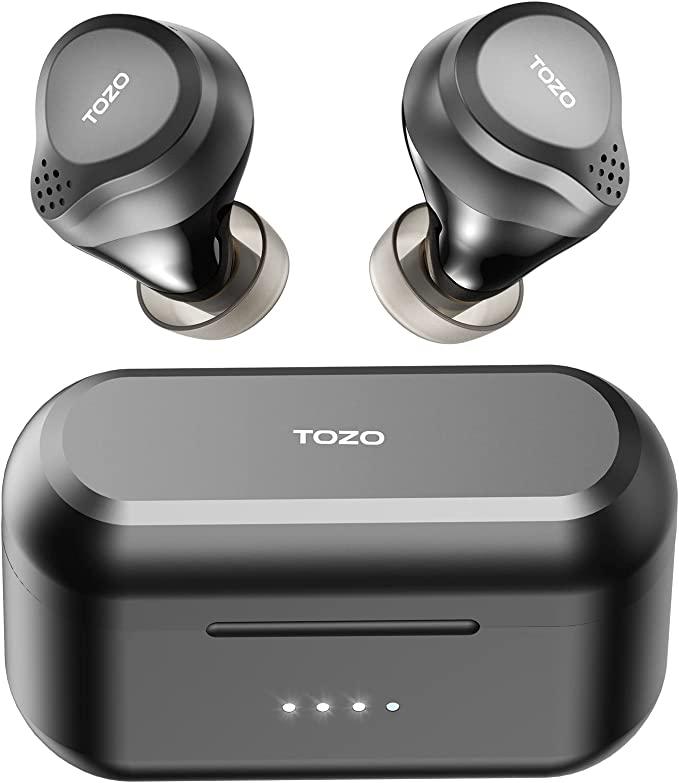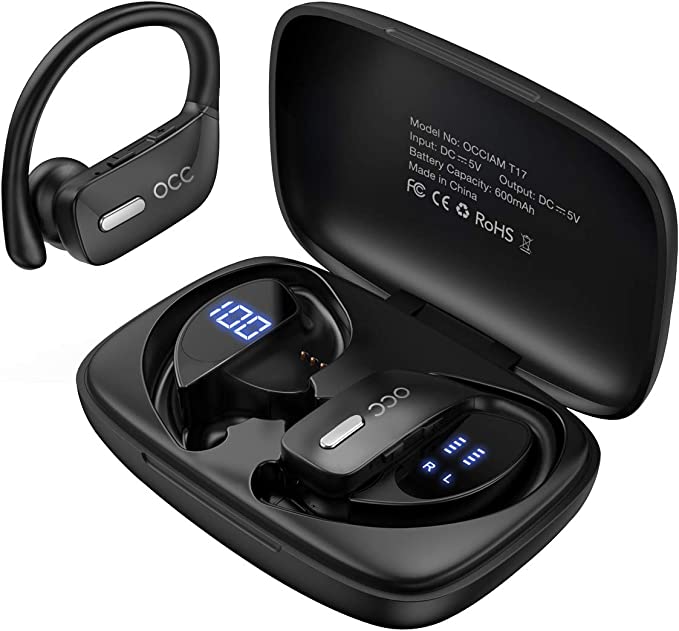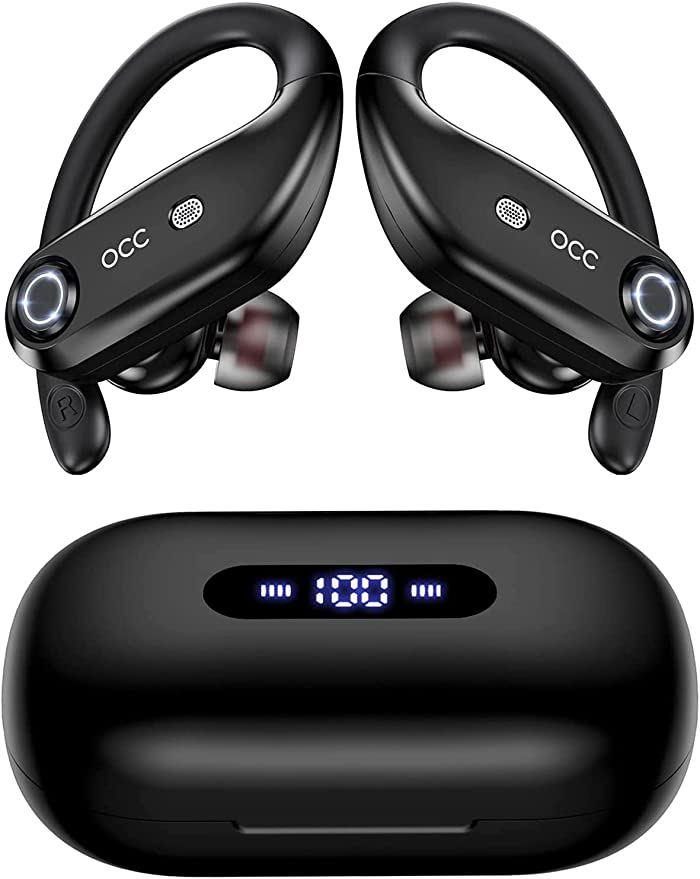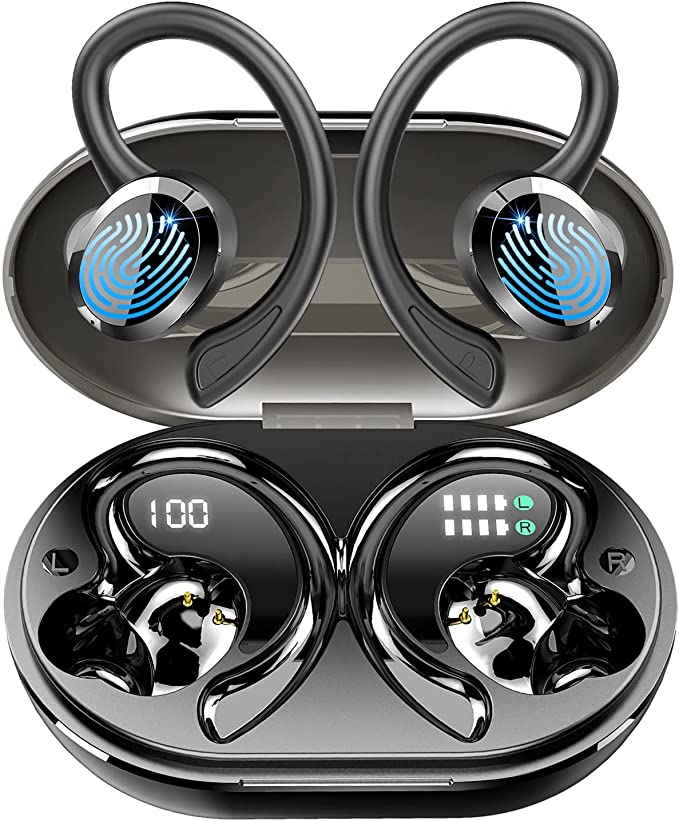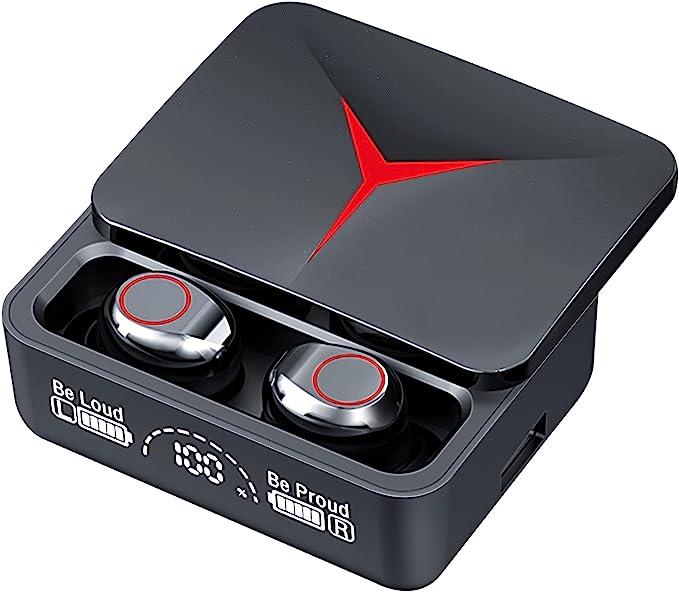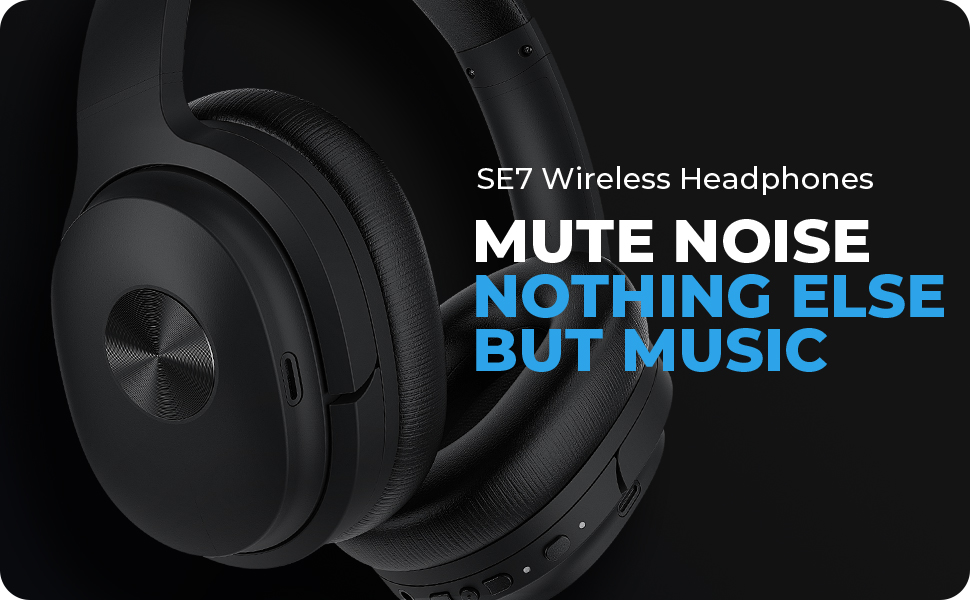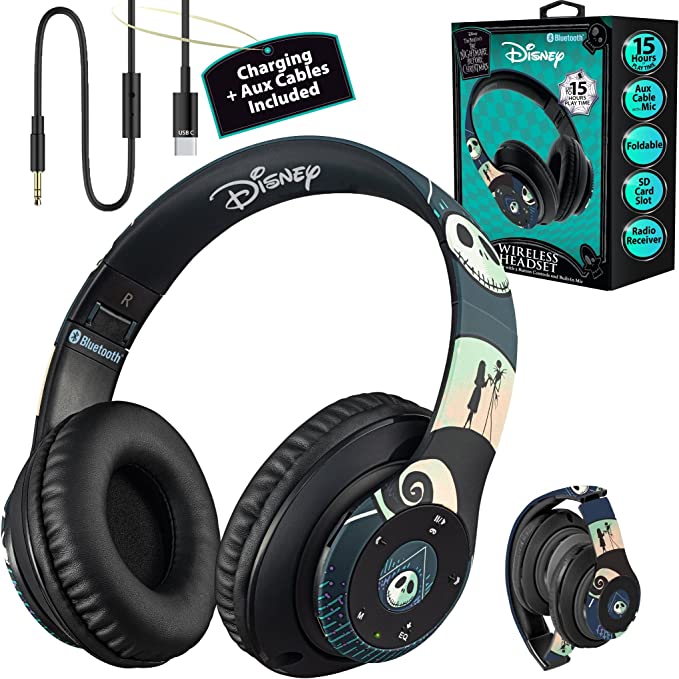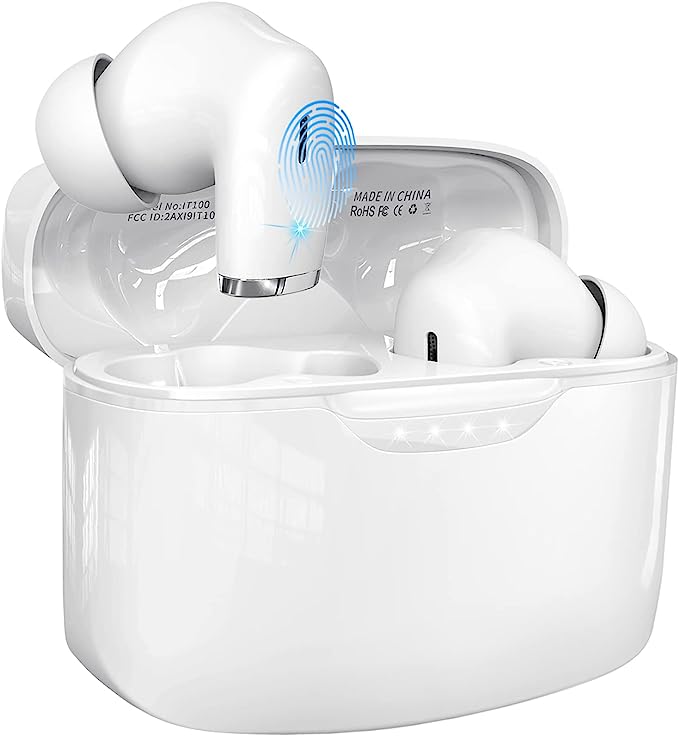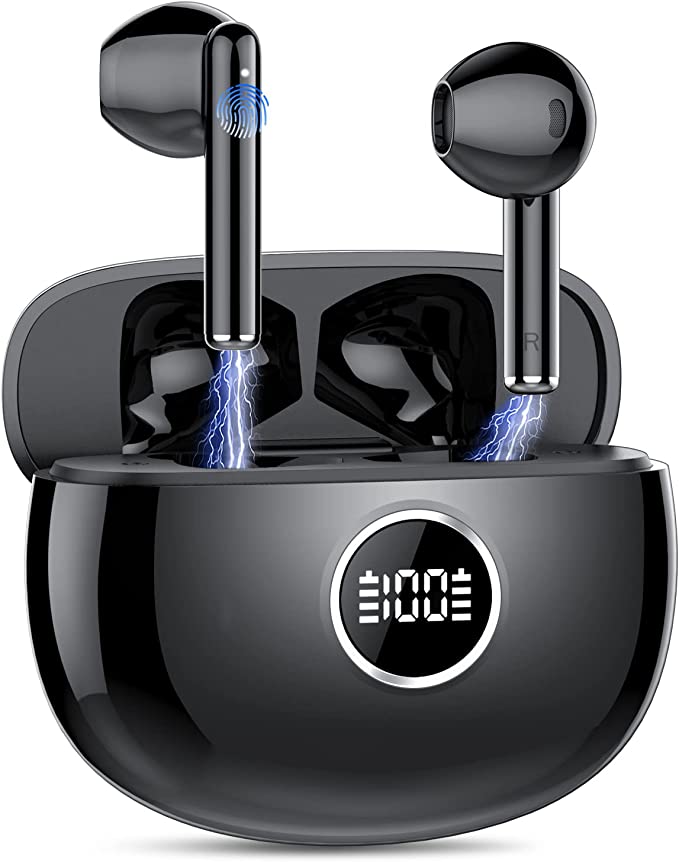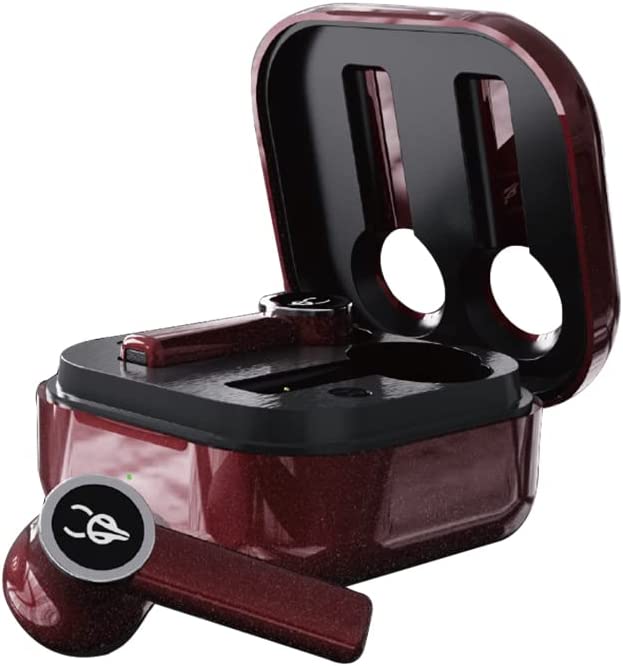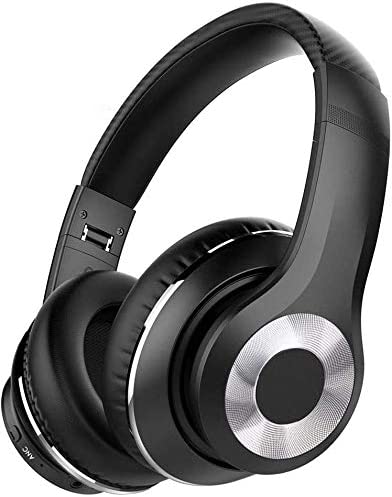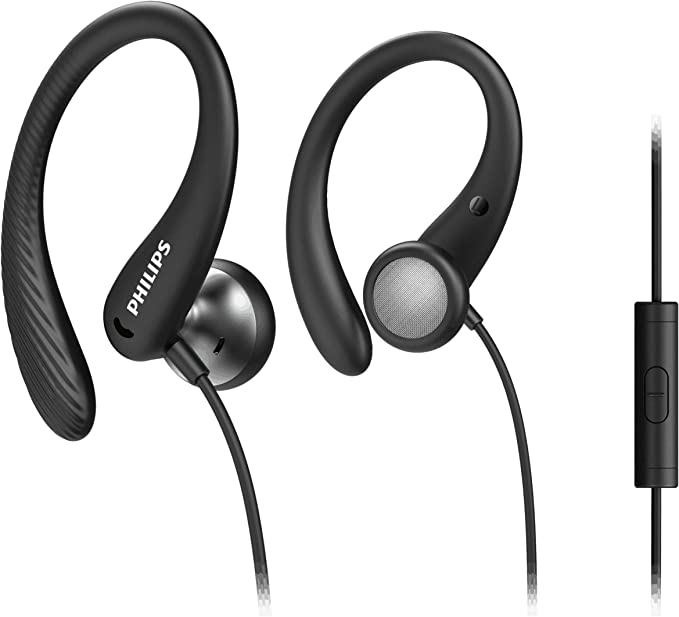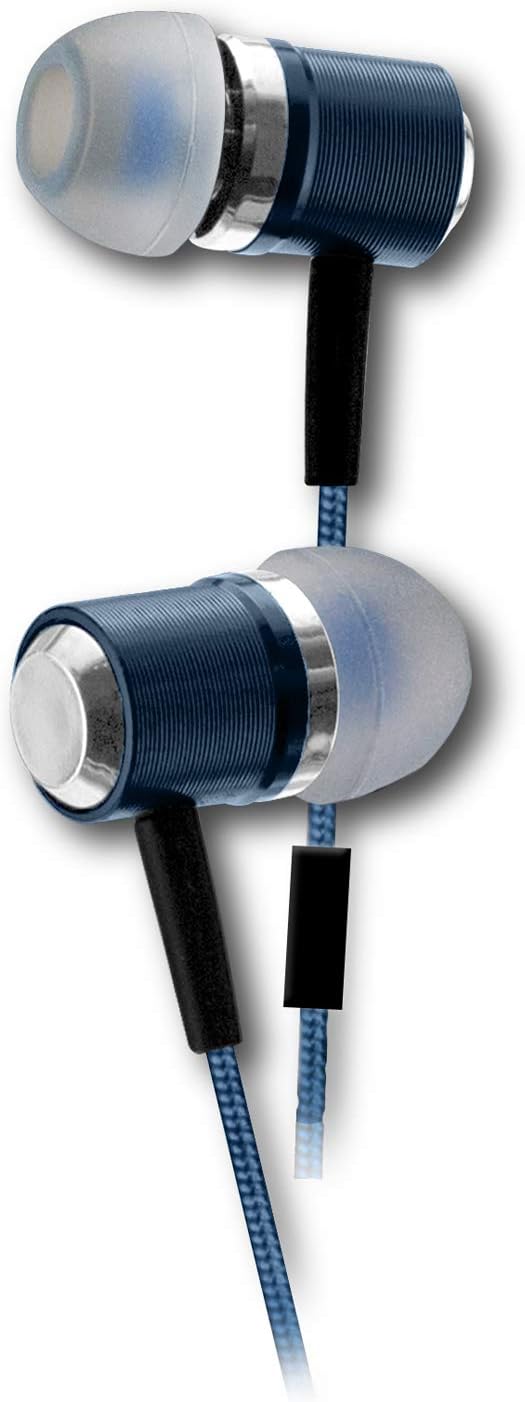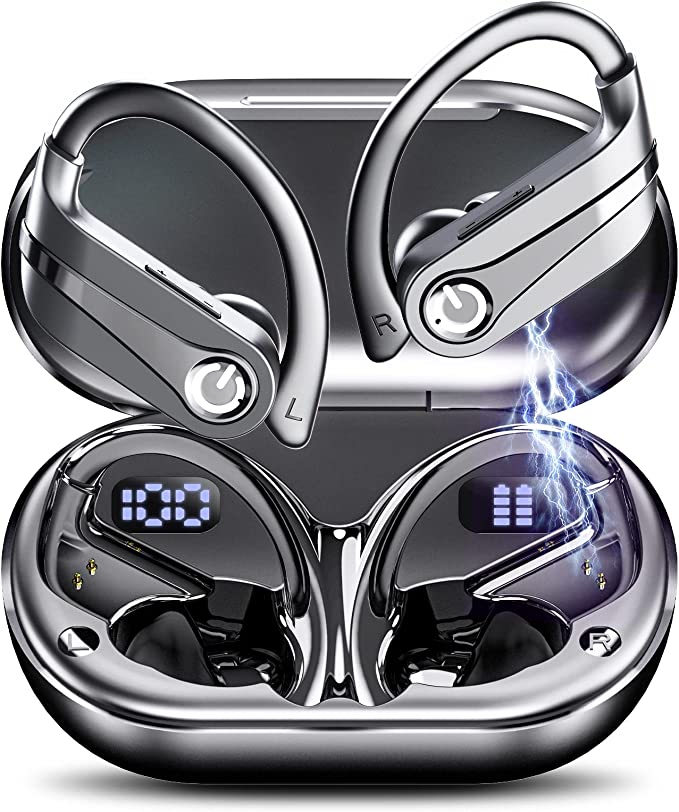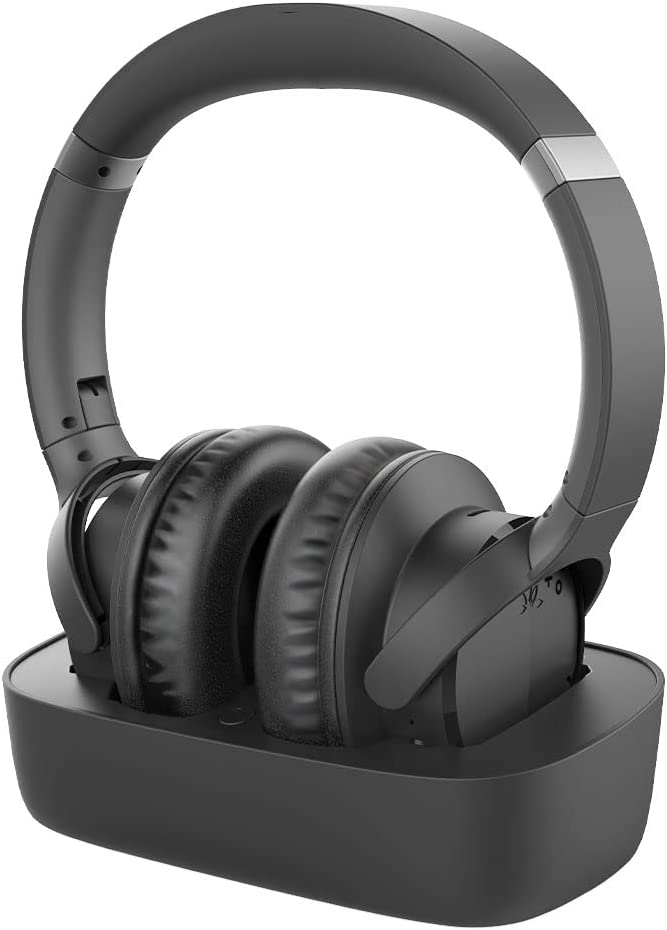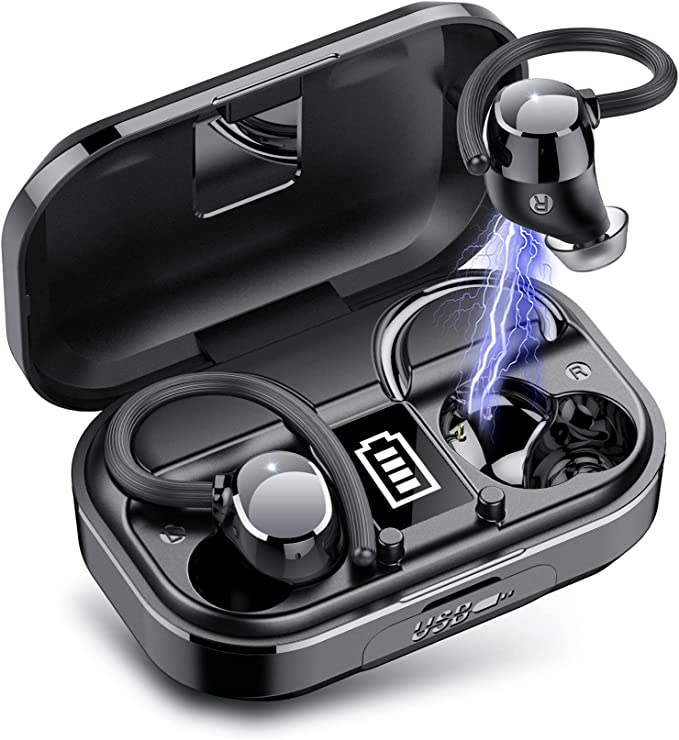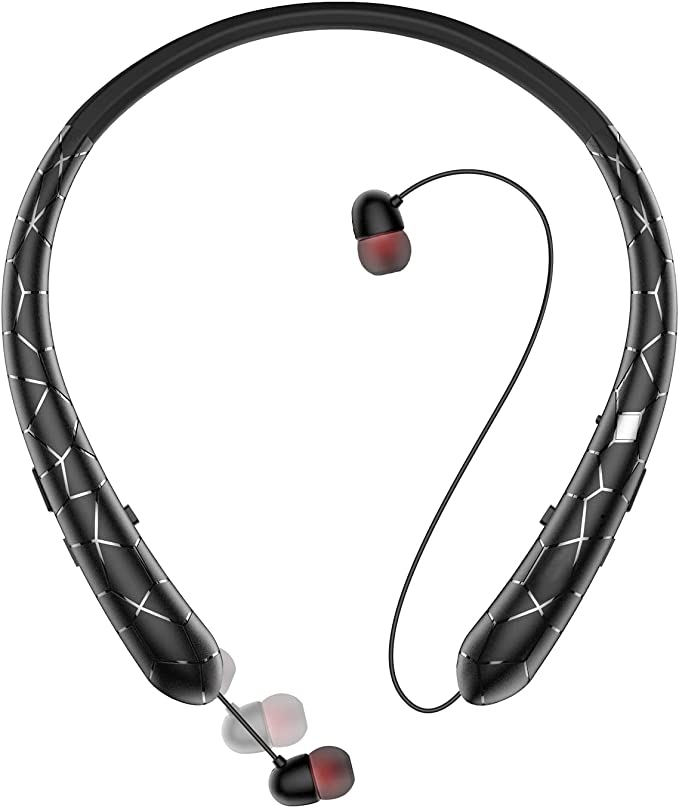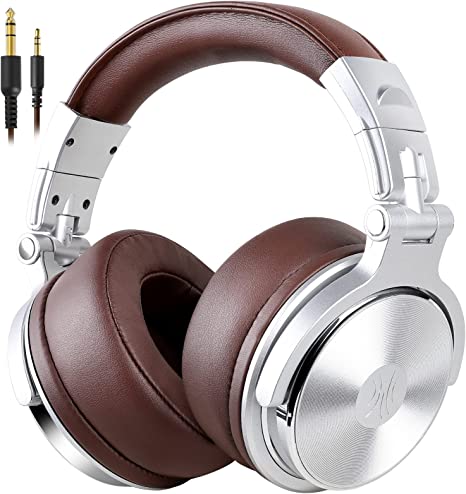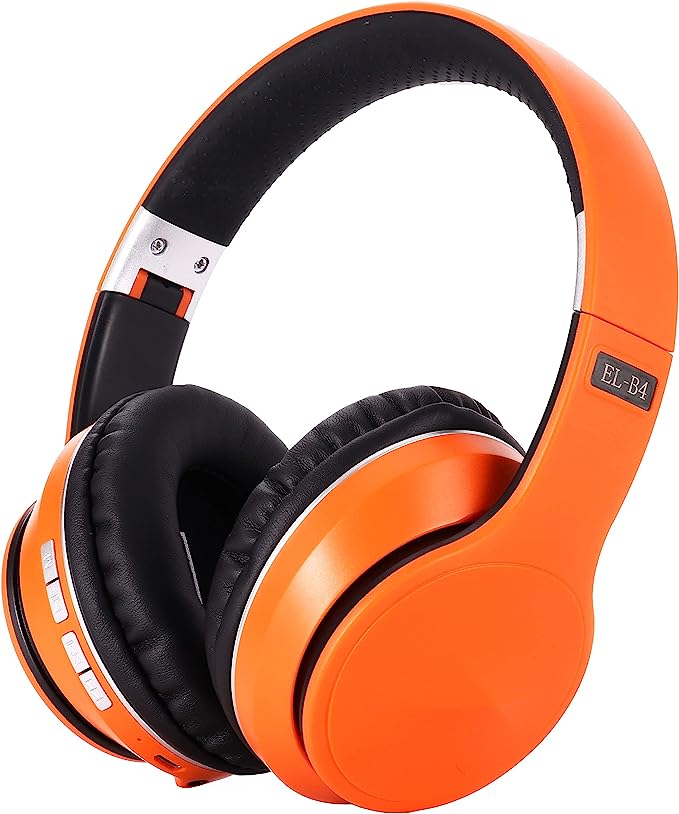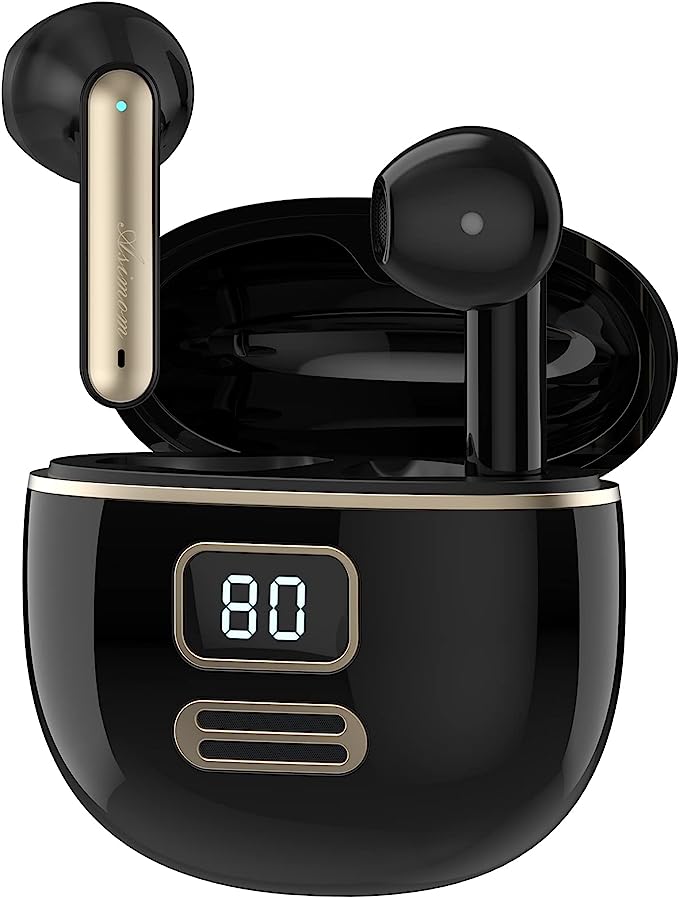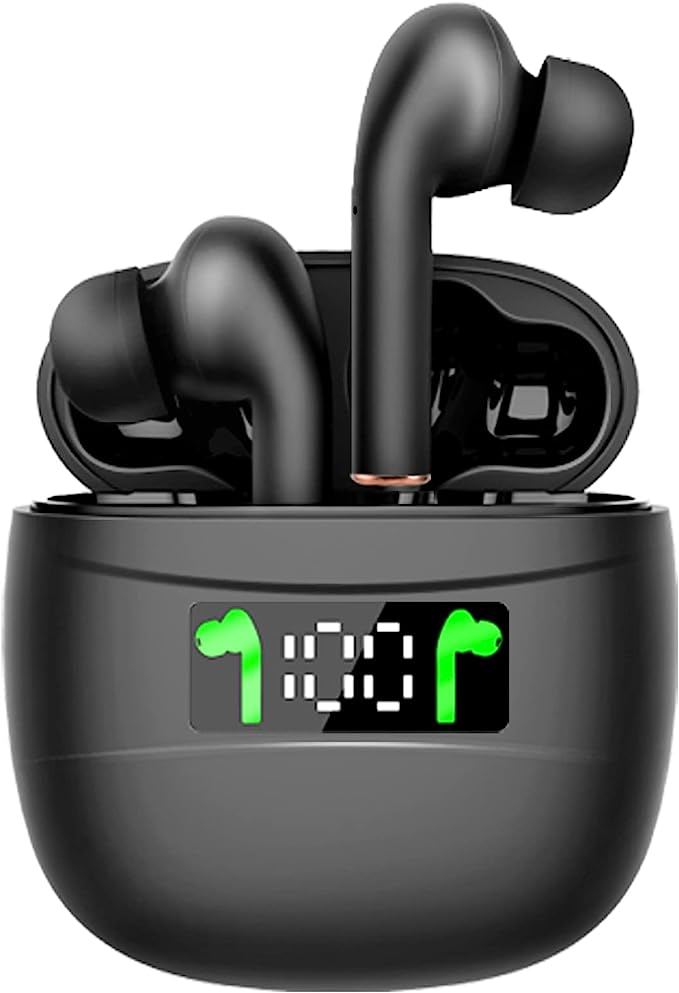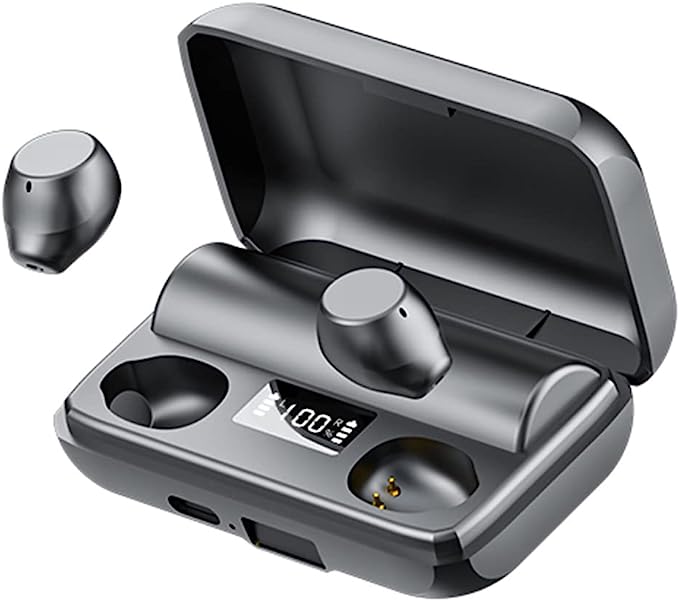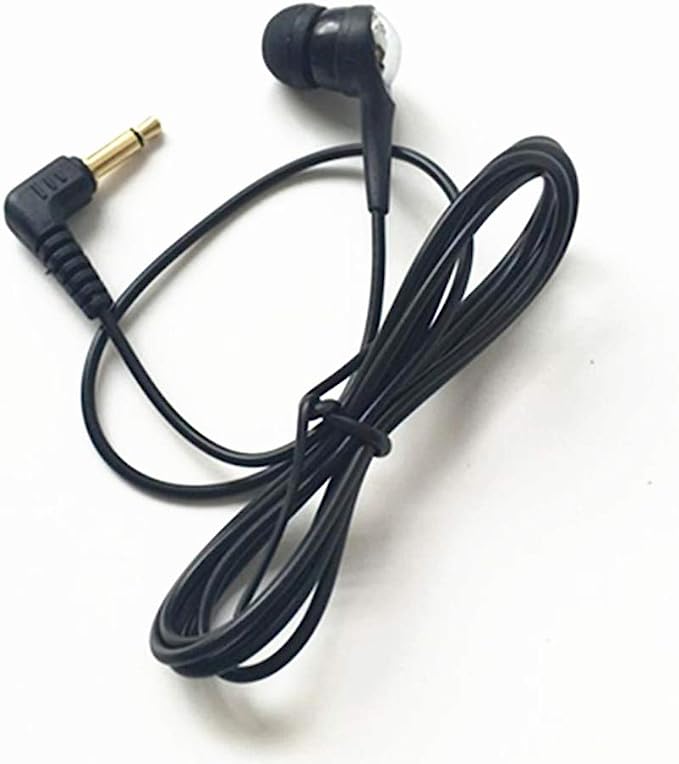VRIFOZ T20 Wireless Earbuds: Will These Sports Earbuds Actually Stay in Your Ears?
Update on Feb. 19, 2025, 2:58 p.m.
Picture this: you’re finally in the zone, pushing your limits on a morning run. Your favorite playlist is fueling your energy, each beat perfectly synced with your strides. Suddenly, pop – one of your earbuds slips out, dangling precariously or, worse, hitting the ground. The music stops, your rhythm breaks, and frustration sets in. It’s a scenario familiar to anyone who’s tried to enjoy music during a workout. The struggle for earbuds that can truly keep up with an active lifestyle is real. But what if science offered a solution? Let’s delve into the VRIFOZ T20 wireless earbuds, designed specifically for sports, and explore the technology behind their promise of a “drop-safe fit.”

The Age-Old Problem: Why Earbuds Fall Out
Traditional earbuds often rely on a simple friction fit within the ear canal. While this works fine for sedentary listening, the dynamics of running, jumping, or even a brisk walk introduce forces that easily overcome this friction. The result? Annoying slippage, constant readjustment, and the ever-present fear of losing an earbud. Ear-hook designs offer more security, but they can also be bulky, uncomfortable, and exert unwanted pressure, especially during prolonged use.
Enter the VRIFOZ T20: A New Approach to Fit
The VRIFOZ T20 wireless earbuds take a different approach, tackling the problem of slippage with a unique design element they call the “C-Skirt.” This isn’t just a fancy marketing term; it’s a clever application of ergonomic principles, specifically tailored to the human ear’s anatomy.

The C-Skirt: An Ergonomic Masterclass
To understand the C-Skirt, let’s take a quick anatomy lesson. The outer ear, the part we see, isn’t just a random flap of cartilage. It has specific curves and contours. The most relevant part for our discussion is the concha, the bowl-shaped cavity just outside the ear canal. The C-Skirt is a soft, flexible silicone wing that’s designed to rotate and gently lock into this concha.
Imagine it like this: instead of just plugging a hole (the ear canal), the T20 also braces itself against the larger structure of the ear. This provides a significantly more secure anchor point. It’s the difference between hanging a picture with a single nail versus using a nail and a wall anchor.
Let’s perform a little thought experiment. Imagine gently shaking your head, then jogging in place, and finally, doing a few jumping jacks. With standard earbuds, you’d likely experience slippage at each stage. With the C-Skirt design, the earbuds are far more likely to remain securely in place. This is because the force required to dislodge them is now distributed across a larger area and requires a more specific movement (a twisting motion, rather than just a pull).
Compared to traditional in-ear designs that rely solely on friction, or over-ear hooks that can cause pressure points, the C-Skirt offers a balance of security and comfort. It’s a subtle but effective innovation.

Beyond Fit: The Sound of Science - 8mm Drivers
Of course, a secure fit is meaningless without good sound quality. The VRIFOZ T20 packs 8mm dynamic drivers. But what does “8mm dynamic driver” actually mean? Let’s break it down.
A driver is essentially a tiny loudspeaker inside the earbud. It’s the component that converts electrical signals (from your phone or music player) into the sound waves you hear. A dynamic driver uses a diaphragm (a thin, flexible membrane) attached to a voice coil. When an electrical current passes through the voice coil, it creates a magnetic field that interacts with a permanent magnet, causing the diaphragm to vibrate. These vibrations create sound waves.
The “8mm” refers to the diameter of the diaphragm. Generally speaking, a larger diaphragm can move more air. Think of it like the difference between a small drum and a large drum – the larger drum produces a deeper, more resonant sound. In the context of earbuds, a larger driver, like the 8mm one in the T20, typically translates to a more powerful bass response and a fuller, richer overall sound. This is crucial for workout music, where a strong bassline can provide motivation and help you maintain your rhythm.
Sweatproof Sanctuary: Understanding IPX5
Workouts often involve sweat, and sometimes even rain. That’s where the VRIFOZ T20’s IPX5 rating comes in. But what does IPX5 actually signify?
“IP” stands for “Ingress Protection.” It’s an international standard that classifies the degree of protection provided by enclosures for electrical equipment. The “X” in IPX5 means that the device hasn’t been formally tested for protection against solid particles (like dust). The “5” is the crucial part – it indicates protection against water jets.
Specifically, IPX5 means the T20 can withstand water projected by a nozzle (6.3 mm) from any direction, at a flow rate of 12.5 liters per minute, at a pressure of 30 kPa, for at least 3 minutes. In simpler terms, you can confidently wear these earbuds during intense, sweaty workouts or even in a light rain shower without worrying about damage. However, it’s important to note that IPX5 is not the same as being fully waterproof. You can’t submerge the T20 earbuds in water (so, no swimming with them!).

Wireless Freedom: The Bluetooth Connection
The VRIFOZ T20, like most modern wireless earbuds, uses Bluetooth technology to connect to your smartphone or other devices. Bluetooth is a short-range wireless communication protocol that allows devices to exchange data. While the product information doesn’t specify the Bluetooth version, most current earbuds use Bluetooth 5.0 or later. Newer versions of Bluetooth generally offer improved connection stability, faster data transfer rates (which can be important for high-quality audio), and lower power consumption.
While user reviews generally praise the easy pairing process of the T20, some mention occasional disconnections. It’s important to remember that Bluetooth connection stability can be affected by various factors, including interference from other devices, physical obstructions (like walls), and even the position of your phone in your pocket.

Intuitive Control: Tapping into Convenience
The T20 earbuds feature touch controls, allowing you to manage music playback, answer calls, and activate your voice assistant without having to fumble for your phone. These controls likely rely on capacitive touch sensors. These sensors detect changes in capacitance (the ability to store an electrical charge) caused by the proximity or touch of your finger.
A single tap might play or pause music, a double tap could skip to the next track, and a long press might activate your phone’s voice assistant (like Siri or Google Assistant). While the concept is simple, the execution can vary. Some users have noted a learning curve with the T20’s touch controls, particularly the lack of onboard volume adjustment.
Powering Your Performance: Battery Life
Battery life is a crucial consideration for any wireless device. The VRIFOZ T20 uses lithium polymer batteries, a common type of rechargeable battery known for its lightweight and relatively high energy density. The official product information states a charging time of 1.5 hours. However, there’s some ambiguity regarding the actual playback time. User reviews provide conflicting reports, ranging from 4 to 5 hours or more. This discrepancy could be due to variations in listening volume, the type of audio being played (podcasts versus bass-heavy music), and even the ambient temperature. It’s best to say that the battery is adequate for most workout and commute sessions, but power users might desire longer life.
The Competition
To fairly evaluate the VRIFOZ T20, it is important to compare it with other earbuds.
| Feature | VRIFOZ T20 | Jabra Elite Active 75t | Anker Soundcore Spirit Dot 2 |
|—|—|—|—|
| Fit | C-Skirt (Ear Wing) | In-Ear with Ear Gels | In-Ear with AirWings |
| Driver Size | 8mm | 6mm | 8mm |
| Waterproof Rating | IPX5 | IP57 | IPX7 |
| Bluetooth Version | Not Specified | 5.0 | 5.0 |
| Active Noise Cancellation | No | Yes | No |
| Battery Life (claimed)| No official claim, user reports vary| Up to 7.5 hours (earbuds), 28 hours (with case) | Up to 5.5 hours (earbuds), 16 hours (with case) |
| Price (approx.) | $32 | $180 | $80 |
As we can see from the table, the Vrifoz is a budget option, compared to higher-end earbuds like the Jabra Elite Active 75T. While the Jabra offers Active Noise Cancellation and a higher IP rating, the T20’s price, combined with the C-Skirt design and larger driver size, still make it an attractive option.
The Anker Soundcore Spirit Dot 2 is a closer price comparison, with a similar driver size and IP rating, yet it also doesn’t feature Active Noise Cancelling.

Conclusion: A Solid Contender in the Sports Earbud Arena
The VRIFOZ T20 wireless earbuds aren’t perfect, but they offer a compelling combination of features, particularly for those seeking a secure and comfortable fit during workouts. The C-Skirt design is a genuinely innovative approach to solving the common problem of earbuds falling out, and the 8mm drivers deliver a satisfying audio experience, especially for bass-heavy music. While the battery life is not definitively stated and active noise cancellation is missing, the IPX5 water resistance and affordable price point make them a worthwhile consideration for budget-conscious athletes and active individuals.
Beyond the T20: Choosing the Right Sports Earbuds
When selecting sports earbuds, consider these factors:
- Fit and Comfort: This is paramount. Look for designs that offer a secure and comfortable fit for your ear shape.
- Sound Quality: Consider your preferred music genres and whether you prioritize bass, clarity, or a balanced sound.
- Water Resistance: Choose an IP rating appropriate for your activities.
- Battery Life: Ensure the battery life meets your typical workout duration.
- Additional Features: Consider features like active noise cancellation, transparency mode, and voice assistant support.
- Price. Find a pair that fits your budget.
And remember, always listen to music at a safe volume to protect your hearing, especially during exercise.
